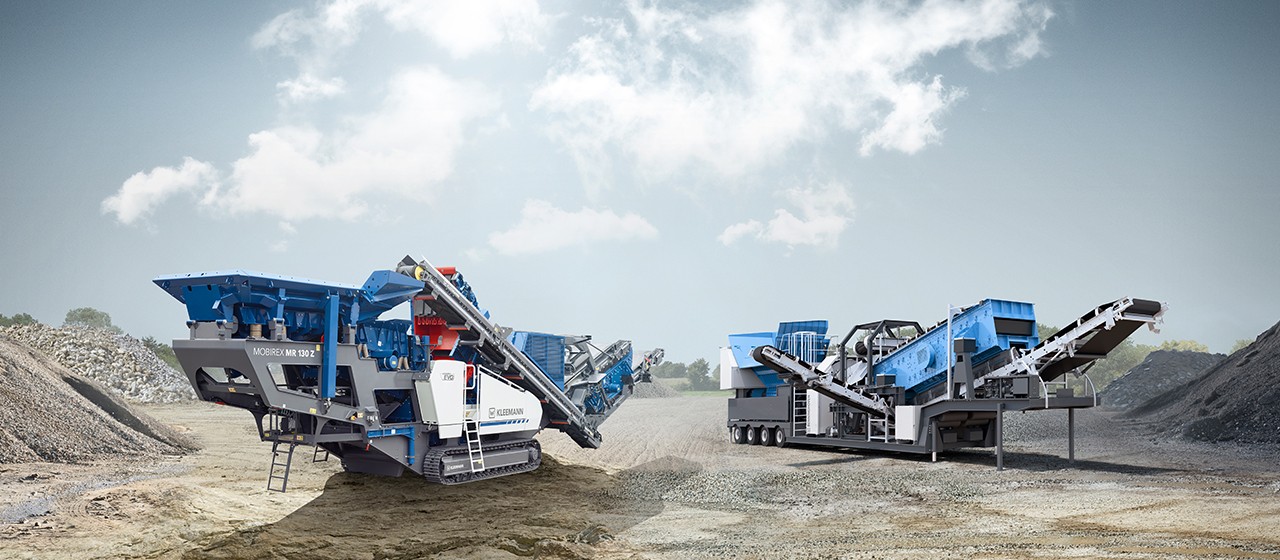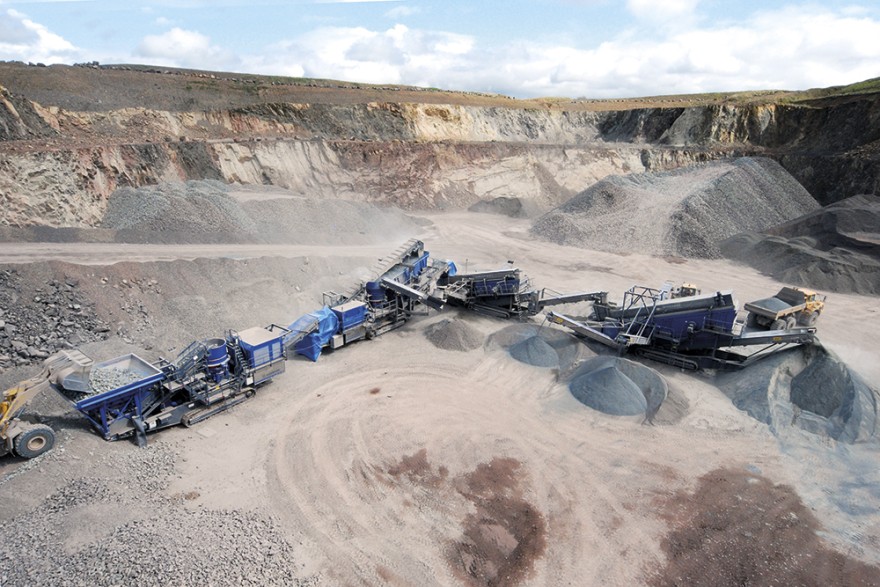Economic processing of natural stone and recycling materials
The natural crushed stone and the recycled materials in classified grain are used as standard aggregate for the concrete as well as for the base, the binding and the surface courses in the construction of roads and buildings. But, how big pieces of rocks become a defined size aggregate?
The crushers are on the go
The versatility and flexibility in the application is the main advantage that the mobile crushers have in comparison with the stationary crushing plants.
The mobile crushers are used in quarries, mining, working places and in the recycling industry. The solid plants mounted on caterpillars are able of processing rock and recycling material, thus producing mineral aggregates and recycled construction materials, respectively, for the construction industry.
When natural stone or recycling material is processed such as demolition residuals, concrete, asphalt, incineration ashes or steel slag, an excavator or wheel loader feeds the material to the mobile crusher. Next, the material produced is used for the road construction or other similar applications.
Natural rock processing
Processing of natural rock with mobile crushers
The natural stone processing uses a crushing and sifting process in different stages for producing defined size grains from big rock pieces. Such classified fractions of final grain are used as aggregates for the concrete, the asphalt base, the binder and the surface layers of the course in the road construction as well as in the building construction.
Rocks extraction
The rock is extracted through drilling and sandblasting. A possible option for processing the bulk material after having been reduced at the feeding size of the crushing plant is the excavator transport or wheel loader.
Excavator transport or wheels loader
When processing in mobile crushing plants, excavators or wheel loaders are used in order to feed the rock to the crushing machine which is usually just mounted on the front side of the quarrel. The crushed material is then sent to the next processing stage through conveyor belts or is transported from the quarrel by trucks.
The cubic particles support the pressure
The wider the resistance to the rock compression, the wider it is also its quality which plays an important role, particularly, in the road construction. The resistance of a material to the compression splits it in: hard stone, medium-hard or soft, which also determines the crushing techniques used in the processing in order to obtain the desired grain sizes. However, the material quality is significantly influenced by another outstanding guideline: the grain shape. The more cubic the individual grains are, the better will be the blockage of the resulting particle. The final grains with a sharp cubic shape are found by using several crushing stages. A cubical shape that shows an edge relationship better than 1:3 is common in the high-quality final aggregate.
Crushing technology
Mobile Jaws Crushers Technology
The jaws crushers operate according to with the principle of pressure crushing. The crushing material is crushed in the wedge-shaped hole between the fixed jaws crusher and the jaws crusher articulated in an eccentric axle. The material is crushed by the elliptical movement and downward transported. This takes place until the material is smaller than the adjusted crushing size.
Mobile impact crusher technology
The mobile impact windmills on MOBIREX series caterpillars are used for soft and medium-hard natural stones and the reprocessing of construction wastes. In addition to the quality of the generated final product, nowadays it is also important the environmental and financial awareness, the availability and a wide range of applications.
In comparison with the pressure crushing, the principle herein used is the impact crushing. In such process, the crushed material is collected by a fast movement rotor, quite accelerated and crushed against an impact plate (“impact toggle”). From there, it falls at the reach of the rotor. The crushed material is broken repeatedly until it may go through the space between the rotor and the impact tipple.
Mobile cone technology
With these crushers, the crushing operation is performed through pressure crushing within a space of opening and closing crushing between the trail coating and the cover. Opening and closing are performed simultaneously in the opposite sides of the crushing chamber.
With KX cone crusher, the axle of the crusher is pressed in the mainframe. The cover support is mounted over an eccentric hydraulic operation. The separation between the cover and the bowl lining opens continuously with the rotation of the hydraulic operation. The size of the grain to be produced is changed by raising or lowering the bowl lining.
Learn about our offer of crusher products – Brand Kleemann


